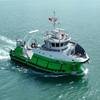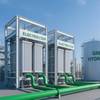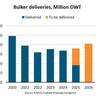Shipping Faced with a Positive, Yet Complex, Changing macroeconomics landscape
The global macroeconomic scene has become more volatile, with prominent factors such as oil prices and global currencies causing a commotion. This is resulting in large-scale distributional changes of wealth and income that will impact global trade patterns in the long run if these changes stick. Lower oil prices, for example, is not just a matter of lower fuel cost for the shipping industry, it also affects trade balance positives for oil importing nations and does the opposite for oil exporting nations.
The Japanese economy grew by 1.0% in Q1 2015 compared to the previous quarter. This strong growth rate was brought around by higher business spending. The data puts economic growth in Japan at the strongest level in two years. However, sluggish consumer spending and lower industrial output in April could limit the expansion in Q2 somewhat.
The economic growth in the euro area rose noticeable in the first quarter of 2015 as both France and Italy returned to positive growth after the last quarter of 2014 showed no change in GDP. GDP in the euro area went up by 0.4% compared to the previous quarter.
Exchange rate movements in the first five months of 2015 have been substantial. A stronger US dollar and a weakening of the euro and the yen have affected the underlying conditions for trade. In isolation, such movements should result in more imports into the US as consumers benefit from lower import prices. Imports should be coming from the euro area and Japan, as exporters.
Container Shipping: Spot rates in a sink hole, while charter rates for smaller containerships soar
The demand situation is developing a tad slower than what the market had anticipated. After the expected dip around Chinese New Year (February), volumes have failed to pick up markedly. Global volume growth in Q1 was just 1.8%. Nevertheless, things are moving in the right direction and volume growth across the board is seen reflecting the overall positive macroeconomic development.
Where spot rates certainly fail to impress, the increase seen in charter rates for smaller to medium sized container ships have done just that. The 6-12 months’ charter rates currently seen are almost double that of last year’s.
Since 2009 the size of the fleets of container ships between 1,000 TEU and 3,000 TEU of capacity, have all experienced a falling trend. Since early 2013 the decline has increased. Today those fleets are on average 6% smaller than just 2½ years ago, and the trend is set to continue.
602,000 TEU of newbuilt capacity have been added to the supply side of the container shipping market since January 1st. As demolition activity have only removed 72,000 TEU of containership capacity, the fleet is now 2.9% bigger as compared to the start of the year. The overall fleet growth remains on target for the full year at 6.6%. Included to this number BIMCO expects slippage in deliveries to increase for the rest of the year.
Until now the rise in charter rates for the small to medium sized container ships have not caused a flurry on newbuilding contracts. Just six ships in the size between 1,000 and 3,000 TEU have been ordered in 2015. During 2014, 72 ships of this size were ordered. If the rates remain high, more orders could easily surface.
By Peter Sand, Chief Shipping Analyst, BIMCO










